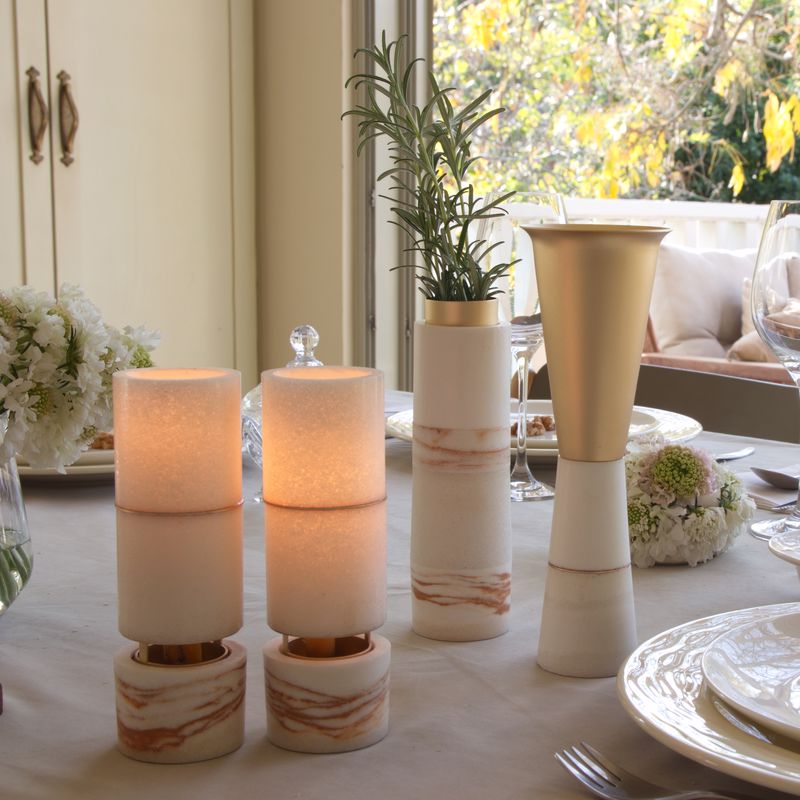No products in the cart.
Shabbat Table Setting
Shabbat, the Jewish day of rest, is a cornerstone of Jewish life and tradition. The Shabbat table, adorned with various ritual objects and artifacts, reflects centuries of religious practice, cultural adaptation, and artistic expression. Each item on the Shabbat table carries deep symbolic meaning and a rich history, tracing its origins to ancient Jewish practices and evolving over time to fit the diverse customs of Jewish communities around the world.
Shabbat Candlesticks
The lighting of Shabbat candles is one of the most significant and universally practiced rituals in Jewish homes. The tradition of lighting candles dates back to the early Rabbinic period (circa 6th century CE), but its roots may be traced even earlier, to the biblical commandment to “kindle no fire” on the Sabbath (Exodus 35:3). The lighting of candles symbolizes the ushering in of Shabbat, bringing peace, warmth, and light into the home. Historically, oil lamps were used, but by the Middle Ages, wax candles became more common, particularly in Ashkenazi communities. The number of candles lit varies, but traditionally two are used, representing the dual commandments of “Zachor” (remember) and “Shamor” (observe) the Sabbath.
There are no specific rules to which candles must be used though traditionally the candles used are longer to light for a longer time. Beeswax candles are eco-friendly ,do not soot, better for your breathing and have pleasant honey scent. The light is warm yellow and brighter gives a much more elegance look to the Shabbat table setting
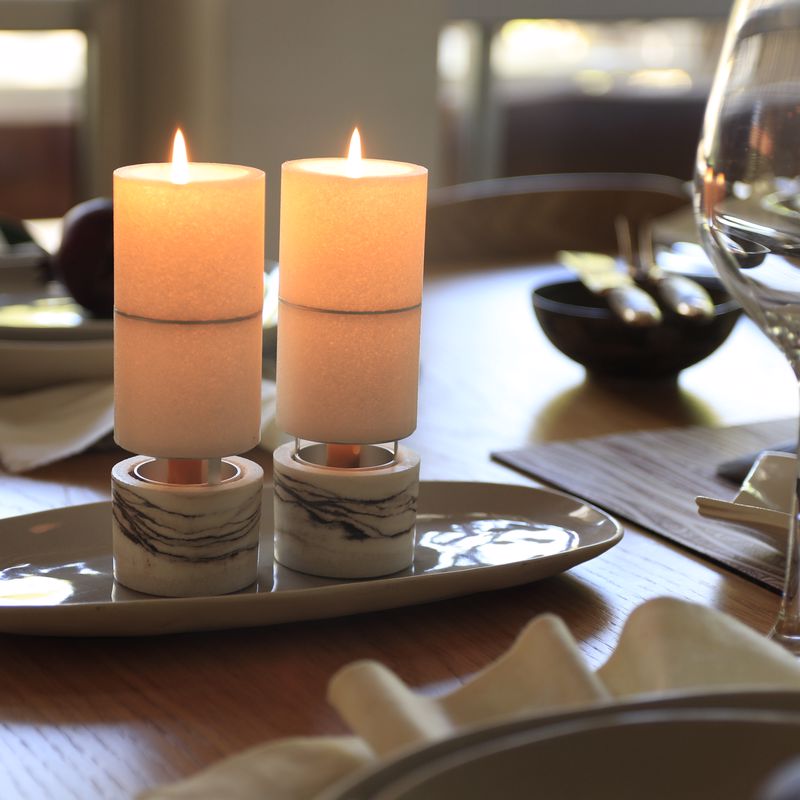
Challah Board and Challah Cover
Challah is a braided bread that plays a central role in the Shabbat meal. Its origins are linked to the biblical mitzvah of “hafrashat challah” (separating a portion of dough as an offering), a practice that dates back to the time of the Temple in Jerusalem. The custom of eating bread on Shabbat, however, is rooted in ancient Jewish dietary laws, where bread was considered a staple food.
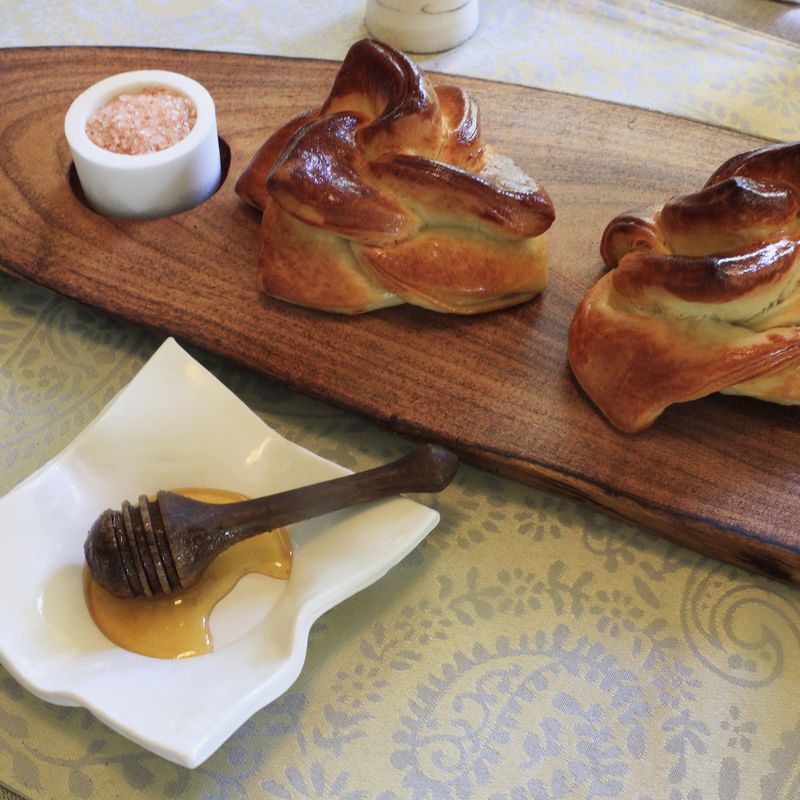
The braided form of challah, which became popular in Ashkenazi communities during the Middle Ages, is symbolic of unity and harmony. The challah board is not a traditional artifact buthas become part of the shabbat table setting to give the challah bread an exclusive place on the table and differentiate it from any other bread served in everyday life and not during the Shabbat Kiddush ceremony. The challah bread is often covered with an ornate cloth, a practice that evolved from the Talmudic injunction to cover the bread during Kiddush (blessing over wine), so as not to “shame” it, since bread typically precedes wine in a meal. Its addition represents the fusion of Jewish ritual with Western dining customs.
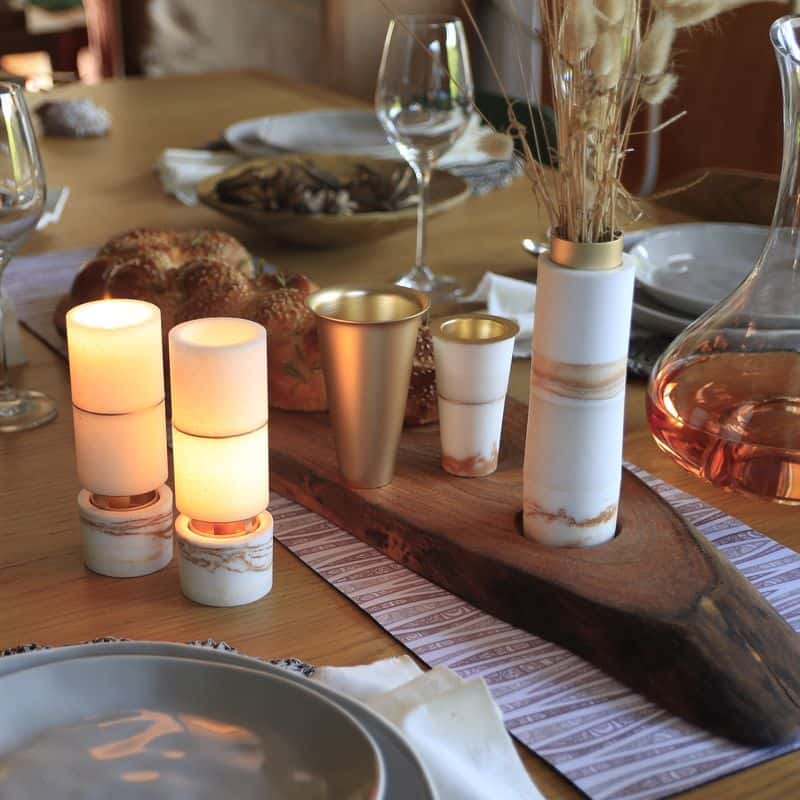
Kiddush Cup
The Kiddush cup, used for sanctifying Shabbat with wine, is an ancient practice that likely originated during the Second Temple period (516 BCE–70 CE). The use of wine in religious rituals is rooted in all ancient rituals and mentioned in the Bible, where it is described as a symbol of joy and blessing. The Kiddush itself, a blessing recited over wine, serves to sanctify the Sabbath and distinguish it from the ordinary days of the week.
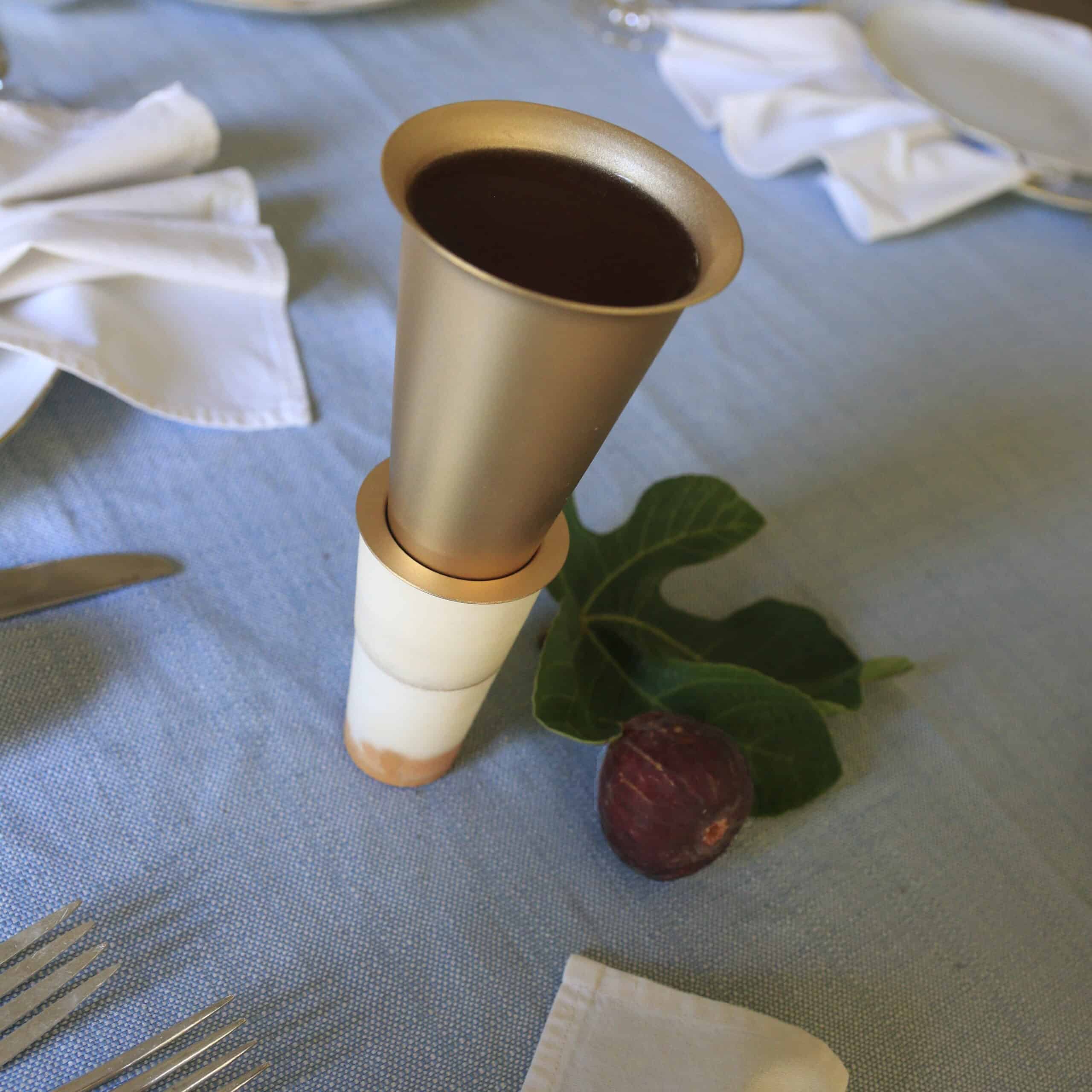
Over time, the Kiddush cup has evolved from simple clay or wooden vessels to elaborately decorated silver or gold cups, reflecting the importance of this ritual and the desire to honor the Sabbath with the finest items.
Nowadays ,there are many designs of the Kiddush cup and new materials became a major part in its design.
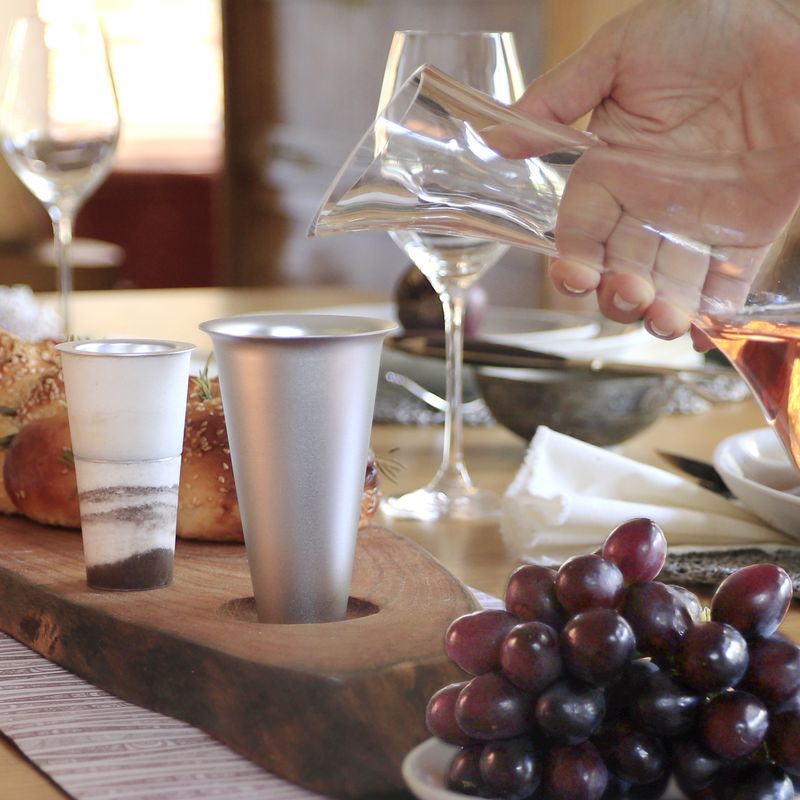
Havdalah Set
The Havdalah set, used to mark the end of Shabbat, typically includes a cup for wine, a candle with multiple wicks, and a spice box. The Havdalah ceremony originated in the early Rabbinic period and serves to differentiate between the sacred time of Shabbat and the ordinary days of the week. The spice box, which holds aromatic spices, is a later addition, symbolizing the sweet fragrance of Shabbat that lingers as it departs. The Havdalah candle, with its braided wicks, symbolizes the light of Shabbat extending into the new week. The materials and designs of Havdalah sets have evolved over centuries, with artisans creating intricate and meaningful pieces that reflect the diversity of Jewish communities.
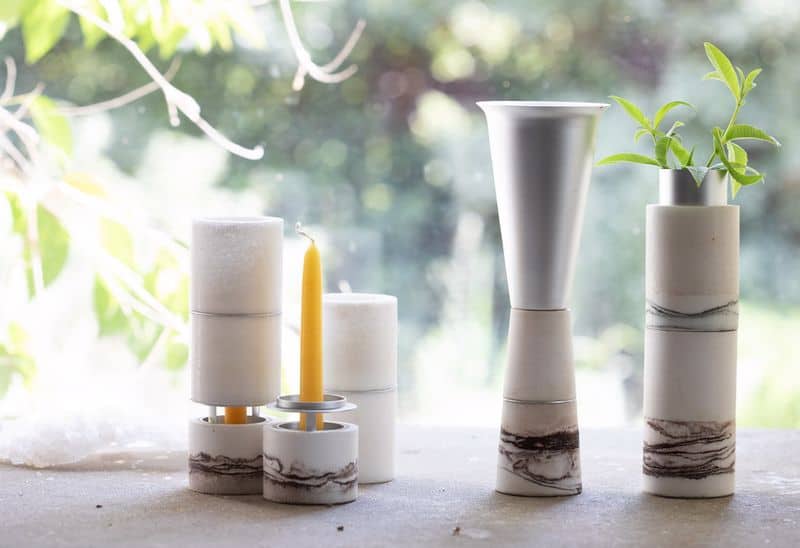
Saltshaker or Salt Cellar
Salt is a seemingly humble yet symbolically rich element of the Shabbat table setting. Its use in the Shabbat meal is derived from the ancient Temple practice, where salt was used in sacrificial offerings as a symbol of the covenant between God and Israel. The Torah explicitly commands, “You shall not omit the salt of your covenant with God from your offering” (Leviticus 2:13) as well as ”It is an everlasting covenant of salt before the Lord for both you and your offspring” (Numbers, 18:19).
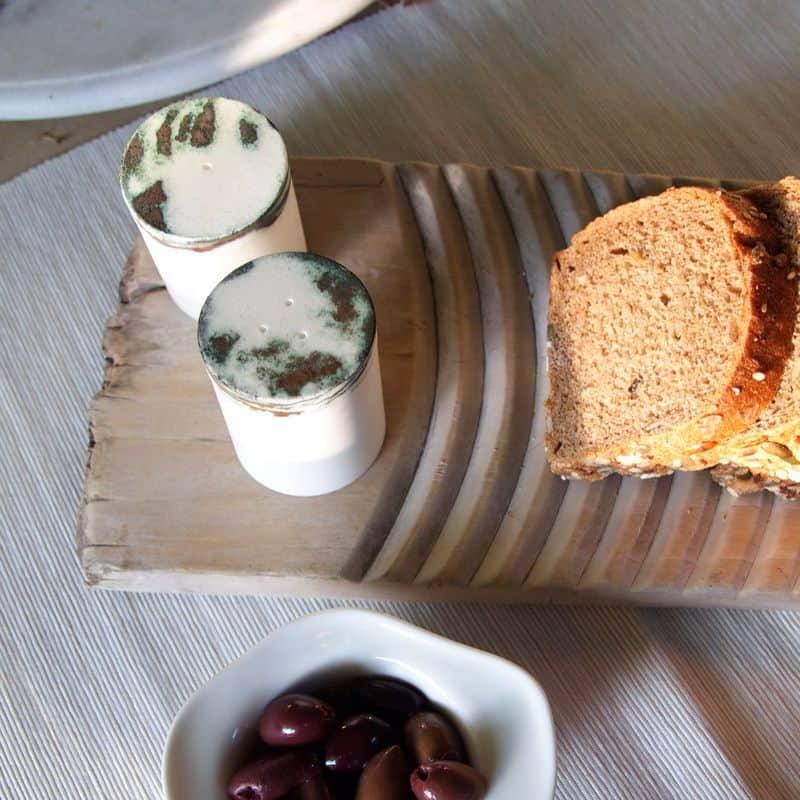
On Shabbat, salt is sprinkled on the challah as a reminder of this covenant and the Temple sacrifices. Since saltshakers are relatively modern designed objects, salt cellars were used in previous times and this tradition was kept for the Shabbat table setting. SaltwareDesign Challah board is designed with a unique salt cellar made of pure 100% salt from the Dead Sea, as this was considered in ancient times as the highest quality salt that must be used in the Temple sacrifice.
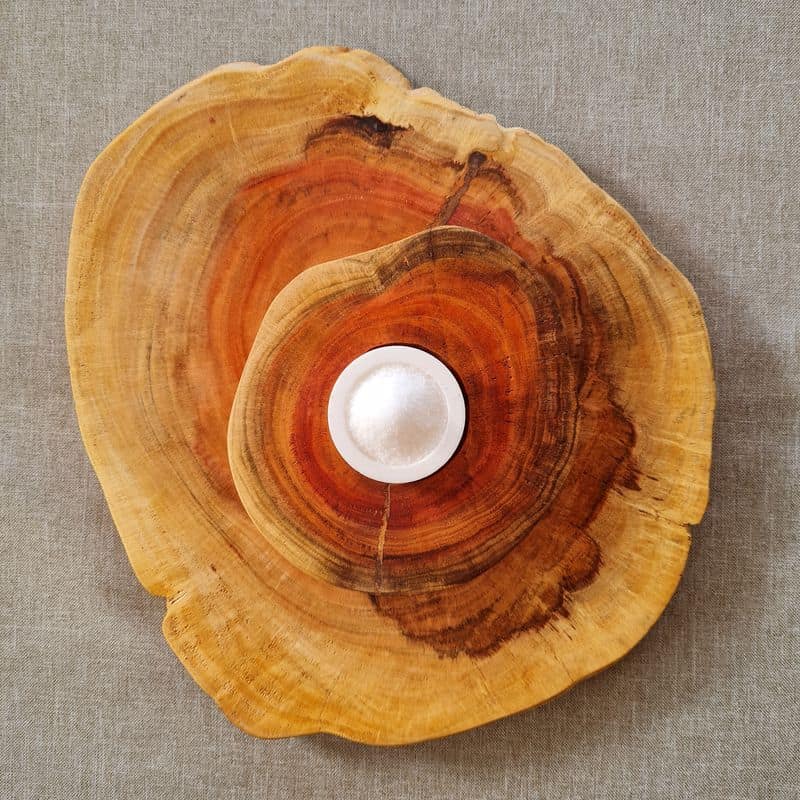
The use of a saltshaker is very common these days due to convenience. SaltwareDesign saltshakers are also uniquely handcrafted of Dead Sea salt and are one of a kind giving the ceremony the meaningful symbolic depth.
Modern Judaica Design and the Spice Box
Modern Judaica design is characterized by a fusion of tradition and contemporary aesthetics, where artisans reinterpret ancient symbols and rituals with a modern sensibility. The spice box, a central element of the Havdalah Set ceremonial artifacts, is one such artifact that has seen innovative reinterpretation in recent years. Traditionally crafted from silver and featuring intricate filigree work, modern spice boxes now come in a variety of materials. These contemporary designs often reflect broader cultural trends, such as eco-friendliness and return to artisanal craftsmanship.
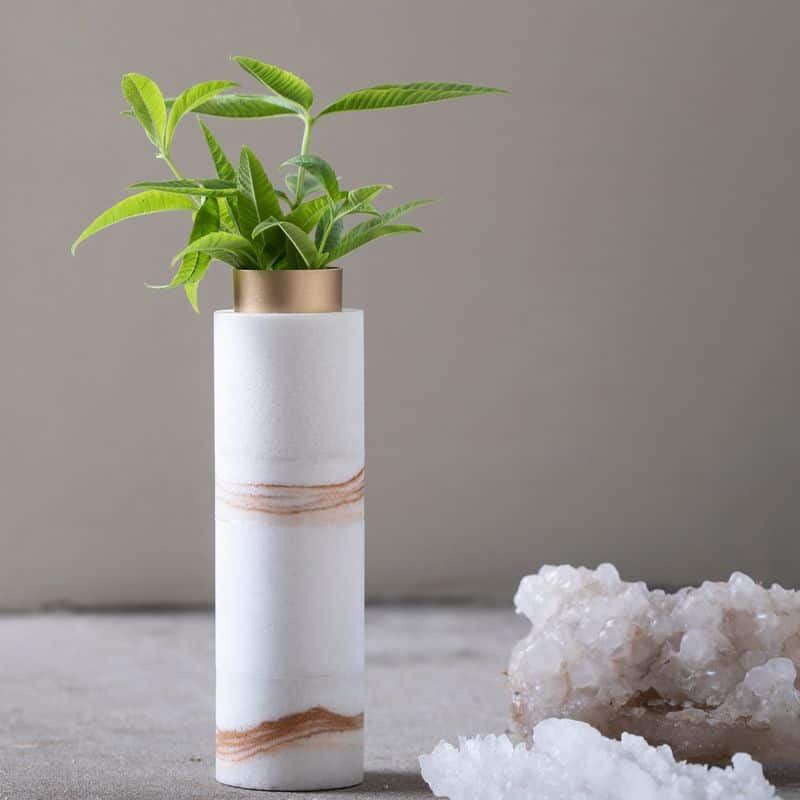
SaltwareDesign contemporary interpretation of the spice box is a décor vase meant to be used with scented herbs like rosemary, lavender, lemon verbena and more.
It brings nature and fresh scent to the Shabbat table setting. The idea is that it can be used for home décor all throughout the year.
Rosh Hashanah Table Setting
Rosh Hashanah, the Jewish New Year, is rich with symbolic foods and rituals that are reflected in the table setting. In additional to the Shabbat table setting Rosh Hashanah table setting includes the Honey Dish, used for dipping apples and challah as a prayer for a sweet new year. Traditionally, honey was stored in simple containers, but in modern times, the honey dish has become an opportunity for artistic expression. SaltwareDesign wooden challah board has a special round carved place that a can be used to place a honey dish for Rosh Hashana instead of the salt cellar.
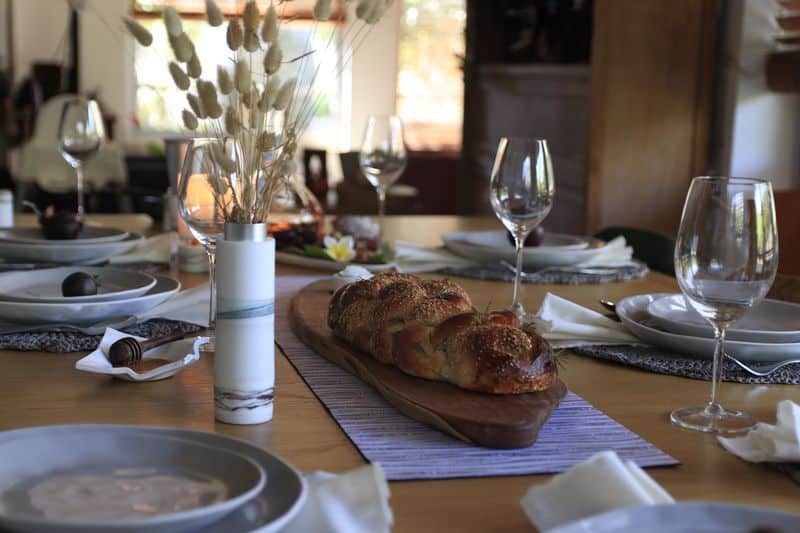
Passover Table Setting
Passover, or Pesach, is a holiday that revolves around the retelling of the Exodus from Egypt, and the Seder table is rich with symbolic artifacts that help tell this story. The centerpiece of the Passover table is the Seder plate, which holds the various symbolic foods used during the Seder ritual. Traditionally, the Seder plate is a simple round dish, but over time, it has evolved into a wide array of designs, from ornate silver and porcelain plates to minimalist, modern interpretations. Each section of the Seder plate is clearly defined, holding items such as Maror (bitter herbs), Charoset (a sweet paste), and a roasted shank bone, all of which are steeped in historical and religious significance.
Another important Passover artifact is the Matzah cover, a decorative cloth that holds the three pieces of matzah (unleavened bread) used during the Seder. The matzah cover often features intricate embroidery or designs that depict scenes from the Exodus, serving both a practical and symbolic function. Modern Judaica designers have reimagined the matzah cover in a variety of styles, from traditional embroidered silk to sleek, contemporary designs that reflect the minimalist aesthetics of modern Jewish households.
As an innovative designer, Lia Bruce sought to add a newly designed object for the Passover Jewish table setting – the LIV LUV egg holder.
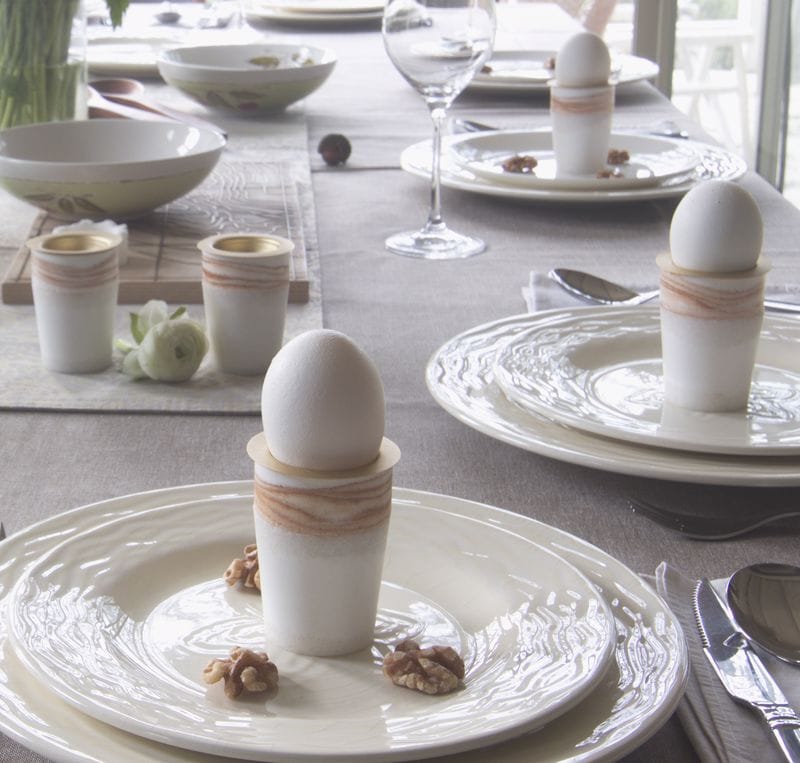
The eating of the EGG before the Passover dinner(the Seder meal) is meant to correspond with the festival (Chagigah) sacrifice. It is eaten after the blessings, as a kind of an appetizer, and before starting the main course and is escorted with the saying “ in memory of the festival sacrifice”. The egg within its round shape and inner nutrition filling was an ultimate symbol for rebirth and new life and part in all spring holidays in the ancient world. Passover was a spring agriculture holiday for the Israeli people and thus the custom and its role was kept.
The design of the LIV LUV egg holder tries to elevate this tradition and though we are no longer an agriculture society, this symbolizes the renewal of life.
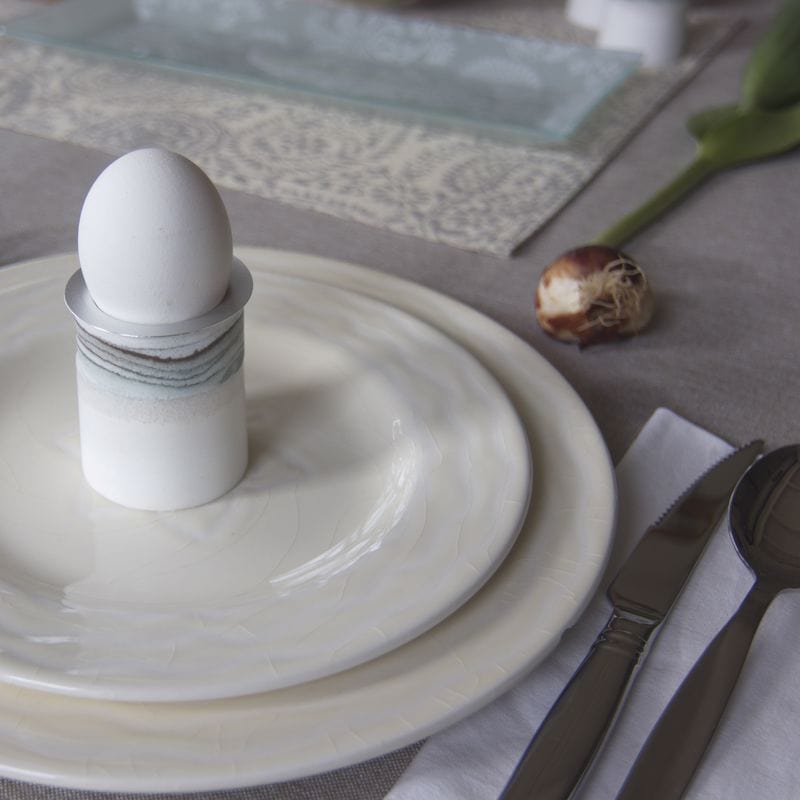
Another major artifact of the Passover Seder is the Eliyahu Cup, or Elijah’s Cup, is a traditional element of the Passover Seder. It is a symbolic cup of wine left untouched at the table for the prophet Elijah, who, according to Jewish tradition, will herald the coming of the Messiah. The cup represents hope, redemption, and the belief in a future time of peace. In recent years, a new custom has emerged to place a Miriam’s Cup on the Seder table. This cup, filled with water, honors Miriam, the sister of Moses, and recognizes the role of women in the Exodus story. Miriam’s Cup also symbolizes the sustaining presence of water and the miraculous well that, according to tradition, accompanied the Israelites in the desert due to Miriam’s merit. This addition reflects a broader effort to include and honor women’s contributions in Jewish ritual and history.
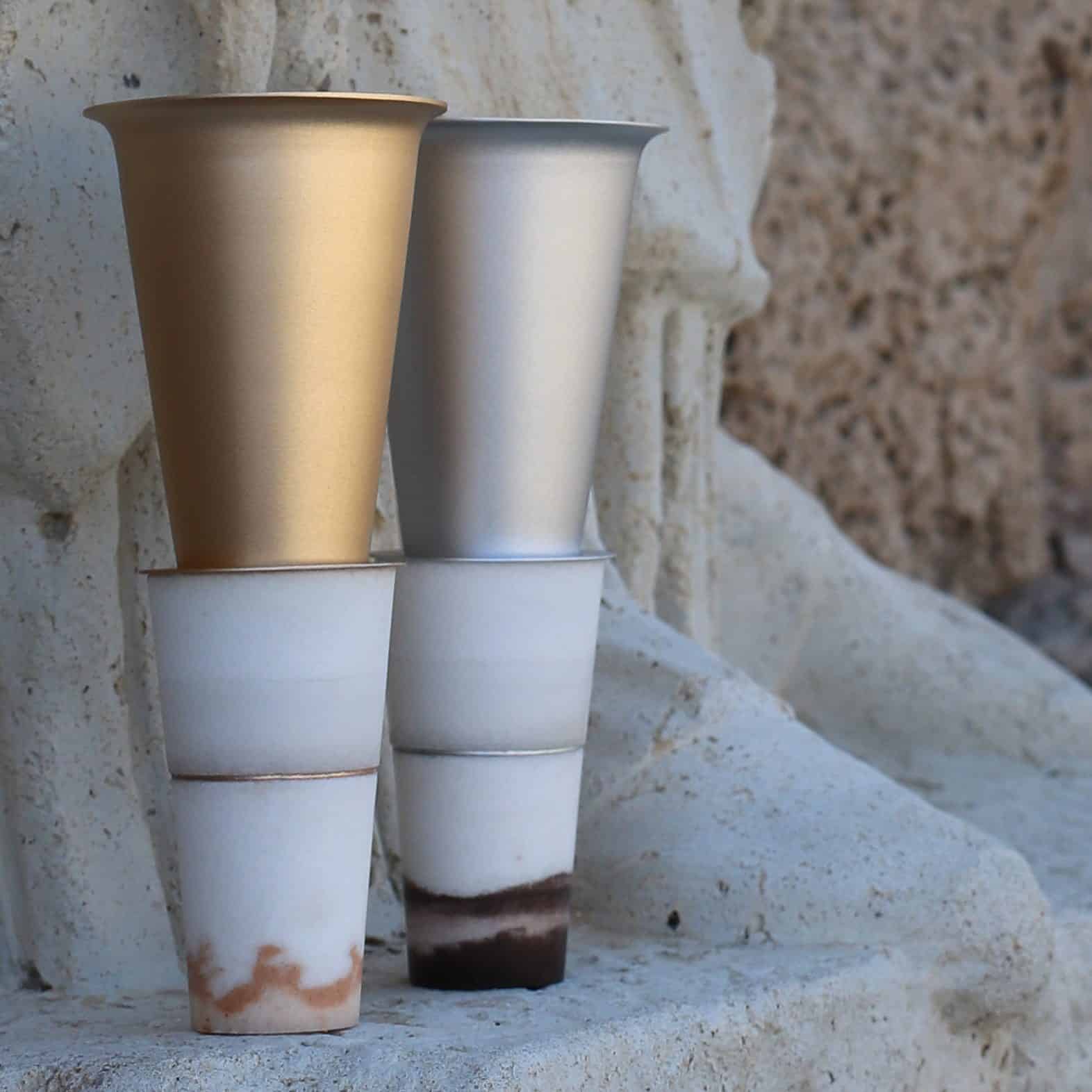
The artifacts of the Shabbat table are more than mere objects; they are vessels of meaning, tradition, and memory. Each item, from the candles to the Kiddush cup, tells a story of Jewish history, religious practice, and cultural evolution. Together, they create a tableau that embodies the sanctity of Shabbat, a day set apart from the ordinary, filled with light, joy, and reflection. Through these artifacts, the Shabbat table becomes a microcosm of Jewish life, linking past, present, and future generations in a continuous chain of tradition

